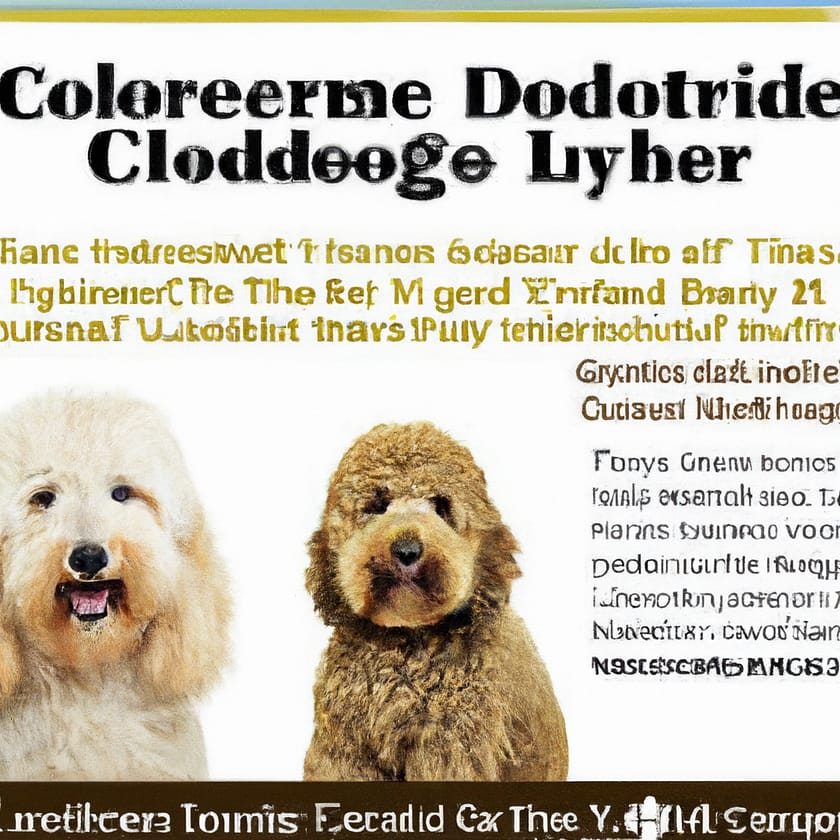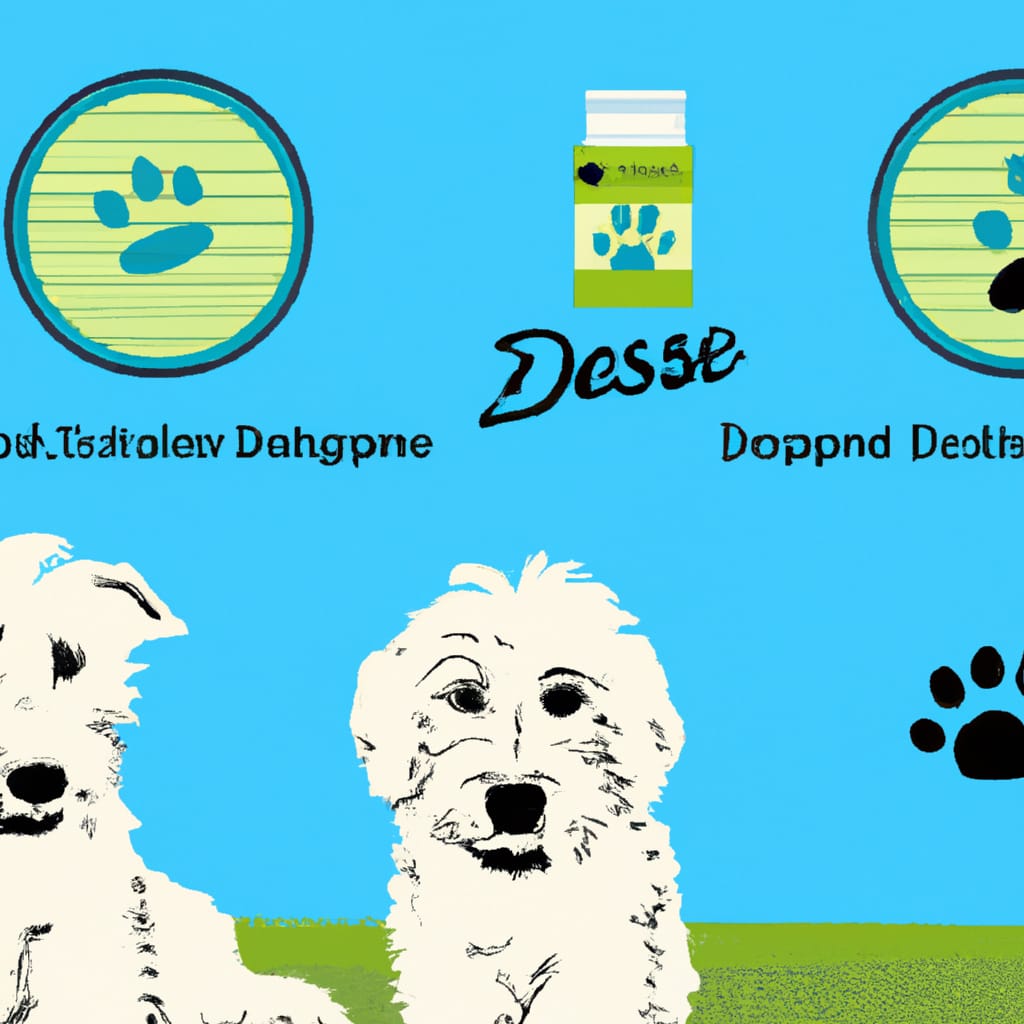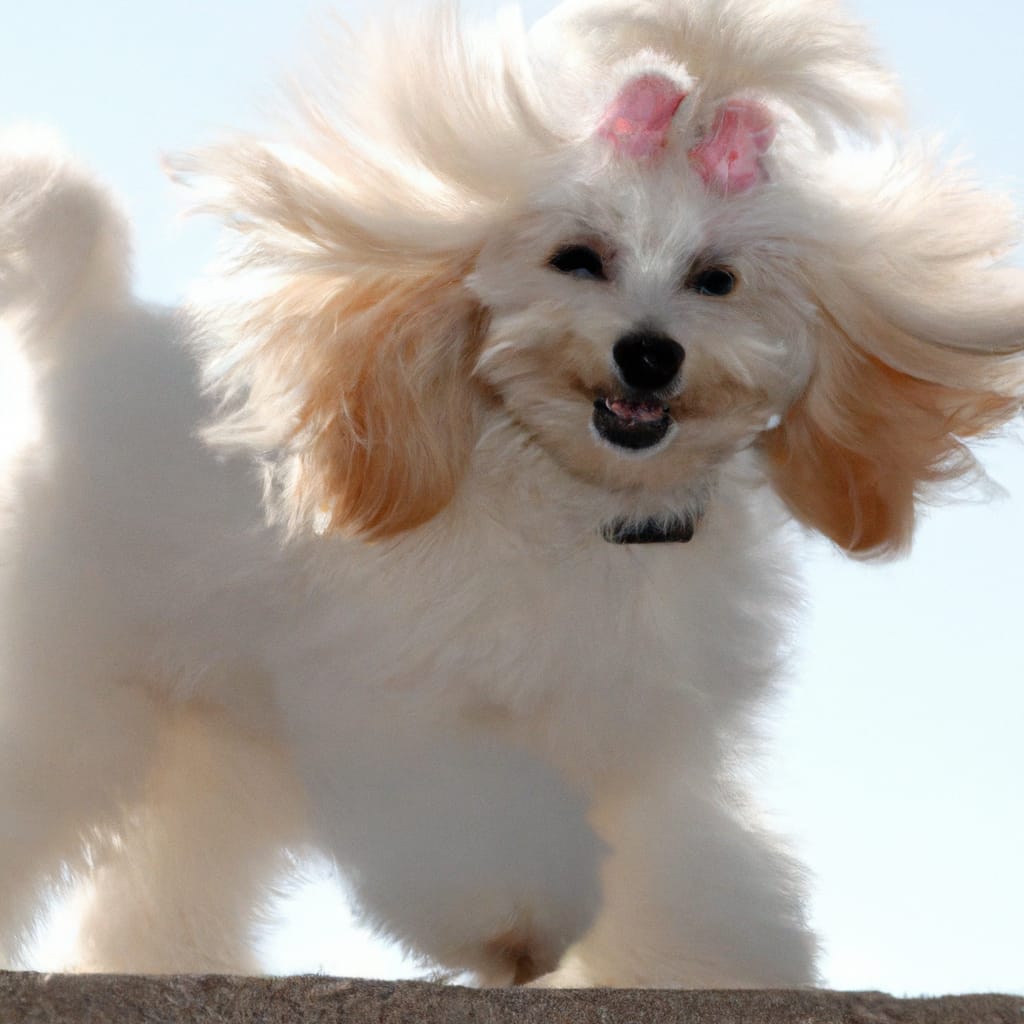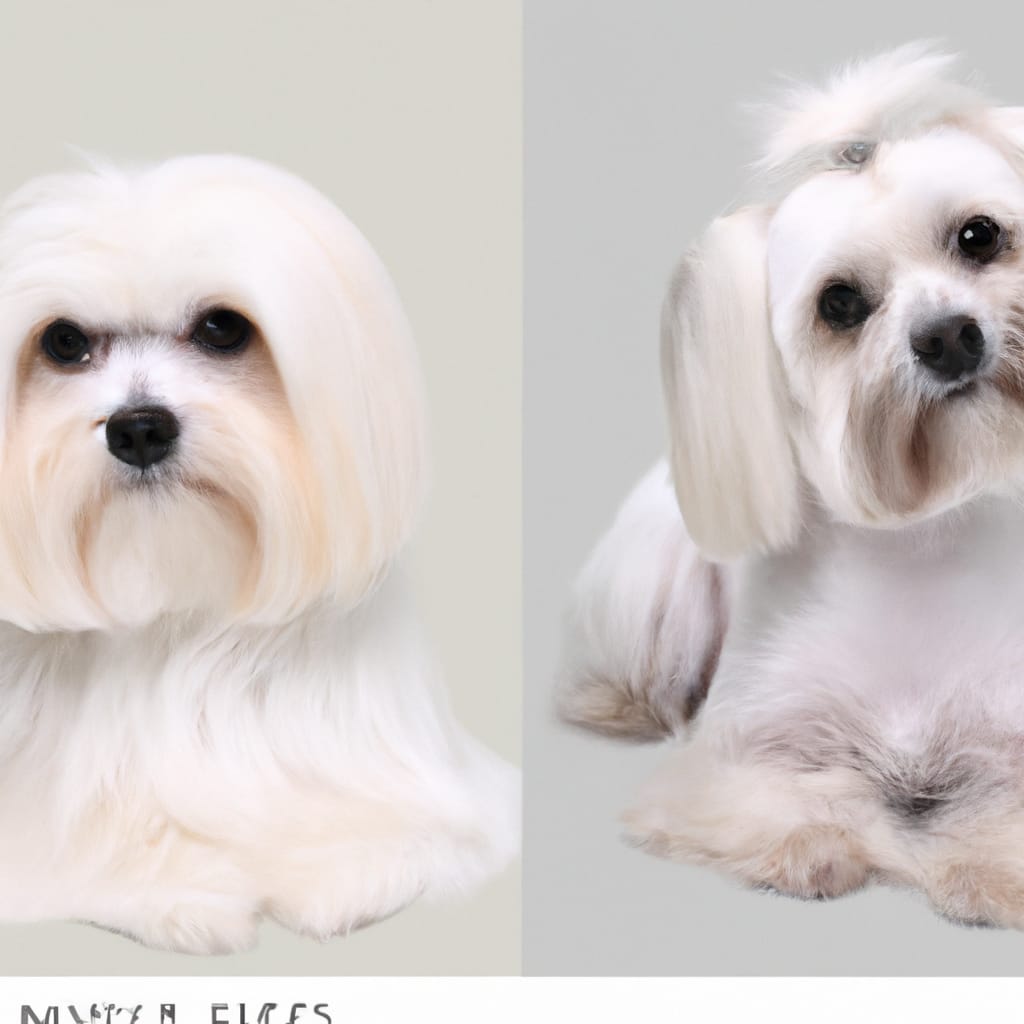Labradoodle Vs Goldendoodle: Comparing These Doodles..
If you’re thinking about bringing a new furry friend into your home, you’ve probably come across the Labradoodle and Goldendoodle. These adorable “Doodles” are a popular choice for families and individuals alike, but what exactly sets them apart? In this article, we’ll take a closer look at Labradoodles and Goldendoodles to help you make an informed decision and find the perfect companion for your lifestyle. Get ready to explore the unique characteristics and qualities that make these Doodles so lovable and find out which one may be the best fit for you.

Physical Appearance
Size
Both Labradoodles and Goldendoodles are considered medium to large-sized dogs. Labradoodles typically range from 22 to 24 inches in height and weigh between 50 to 65 pounds. On the other hand, Goldendoodles tend to be slightly bigger, standing at 20 to 24 inches tall and weighing between 55 to 75 pounds. Ultimately, the size of these doodles can vary depending on the specific genetics of the parent dogs.
Coat
One of the defining features of Labradoodles and Goldendoodles is their luxurious and hypoallergenic coats. Labradoodles have a variety of coat types, including curly, wavy, and straight. Goldendoodles, on the other hand, usually have wavy or straight coats. Both breeds have coats that can be low-shedding or non-shedding, making them ideal for those with allergies or for those who prefer a cleaner home.
Color
When it comes to color, both Labradoodles and Goldendoodles can come in a wide range of hues. Labradoodles can have solid colors like black, chocolate, or cream, as well as various patterns such as parti, merle, or phantom. Goldendoodles can also have a variety of colors, including golden, apricot, red, or cream. The coat color of these doodles is often determined by the colors of their parent breeds, the Labrador Retriever and the Golden Retriever.
Temperament
Energy Level
Labradoodles and Goldendoodles are known for their friendly and affectionate nature. They are generally energetic dogs that thrive on physical activity and mental stimulation. Both breeds are well-suited for active lifestyles and enjoy participating in various activities, such as playing fetch, going for long walks, and even participating in agility training. However, it is important to note that individual doodles may vary in energy levels, so it’s always best to cater to their specific needs.
Trainability
Labradoodles and Goldendoodles are highly trainable dogs, thanks to their intelligence and eagerness to please their owners. They tend to be quick learners and respond well to positive reinforcement training methods. These doodles excel in obedience training and can easily pick up commands and tricks with consistent training and positive reinforcement. Whether it’s basic commands or advanced tricks, Labradoodles and Goldendoodles are excellent candidates for various training activities.
Personality
When it comes to personality, both Labradoodles and Goldendoodles are known for their friendly, outgoing, and social dispositions. They are typically good-natured and get along well with people of all ages, including children. Labradoodles and Goldendoodles are often described as fun-loving and playful companions who enjoy being part of family activities and are always ready for an adventure. They also tend to have a gentle and patient nature, making them suitable for households with young children or other pets.
Exercise Needs
Daily Activity
Both Labradoodles and Goldendoodles require a moderate amount of daily exercise to stay physically and mentally stimulated. Taking them for at least one or two brisk walks a day, along with some playtime or interactive activities, is usually sufficient to fulfill their exercise needs. They also enjoy participating in various outdoor activities like swimming or playing fetch in the backyard. However, it’s important to note that individual dogs may have different exercise requirements, so it’s essential to tailor their exercise routine to their specific needs.
Exercise Requirements
Labradoodles and Goldendoodles thrive in environments where they receive regular exercise and mental stimulation. While they are active dogs, they don’t necessarily require excessive amounts of exercise. A combination of daily walks, playtime, and interactive toys should suffice in keeping them physically and mentally engaged. However, it’s important to monitor their activity levels and make adjustments as needed, especially for older or less active dogs.
Grooming
Coat Maintenance
Both Labradoodles and Goldendoodles have coats that require regular grooming and maintenance. Their thick and curly or wavy fur can easily become tangled or matted if not properly cared for. Routine brushing sessions, usually once or twice a week, can help prevent matting and remove loose hair. Additionally, regular grooming appointments are often necessary for professional trims and maintenance, especially for those who prefer a shorter and more manageable coat.
Shedding
One of the main advantages of Labradoodles and Goldendoodles for individuals with allergies or those who prefer a cleaner home is their low-shedding or non-shedding coat. However, it’s important to note that no dog breed is truly hypoallergenic, as allergies can vary from person to person. Labradoodles and Goldendoodles shed significantly less compared to other breeds, but they still require regular grooming and shedding management to keep their coats healthy and prevent matting.

Allergies
Hypoallergenic Qualities
Labradoodles and Goldendoodles are often considered hypoallergenic due to their low-shedding or non-shedding coats. These breeds produce less dander, a common allergen found in dog hair and skin flakes, which can trigger allergies in sensitive individuals. While it’s impossible to guarantee that every person with allergies will have no reaction to these doodles, many allergy sufferers report successfully living with Labradoodles and Goldendoodles without experiencing severe allergic reactions.
Potential Allergenic Reactions
Although Labradoodles and Goldendoodles are generally considered hypoallergenic, some individuals may still experience allergic reactions, albeit milder ones. It’s important to note that allergies can vary from person to person, and what may cause a reaction in one individual may not affect another. If you have allergies but are considering getting a Labradoodle or Goldendoodle, spending time with different doodles and consulting with your allergist can provide valuable insight into potential allergen triggers.
Health Issues
Common Health Concerns
Labradoodles and Goldendoodles are generally healthy breeds, but like all dogs, they can be prone to certain health issues. Some common health concerns in Labradoodles include hip dysplasia, elbow dysplasia, and progressive retinal atrophy (PRA). Goldendoodles, on the other hand, may be susceptible to similar conditions such as hip dysplasia, as well as other issues like hypothyroidism and von Willebrand’s disease. Regular veterinary check-ups, a healthy diet, and proper exercise can help minimize the risk of these health concerns.
Genetic Health Conditions
In addition to the common health concerns mentioned above, Labradoodles and Goldendoodles may inherit certain genetic health conditions from their parent breeds. Through responsible breeding practices and health testing, reputable breeders aim to minimize the occurrence of genetic health conditions in their doodle puppies. Potential buyers should seek out breeders who provide health guarantees and are transparent about the health testing conducted on breeding dogs to ensure the overall health and well-being of the puppies.
Lifespan
Average Lifespan
Both Labradoodles and Goldendoodles have a relatively long average lifespan compared to some other dog breeds. Labradoodles typically live for about 12 to 15 years, while Goldendoodles have a similar lifespan of around 10 to 15 years. However, it’s important to note that the lifespan of individual dogs can vary depending on several factors, including genetics, diet, exercise, and overall healthcare.
Factors Affecting Lifespan
Several factors can influence the lifespan of Labradoodles and Goldendoodles. Providing them with a nutritious diet, regular exercise, and proper veterinary care are essential in keeping them healthy and prolonging their lifespan. Additionally, genetic factors can also play a role, as certain health conditions or predispositions may affect a dog’s overall lifespan. Responsible breeding practices that prioritize the overall health and well-being of the parent dogs can contribute to the longevity of Labradoodle and Goldendoodle puppies.
Compatibility with Children
Playfulness
Both Labradoodles and Goldendoodles are known for their playful nature, making them great companions for children. They typically enjoy engaging in various activities with kids, such as playing fetch, going on adventures, or simply cuddling up for a nap. Labradoodles and Goldendoodles thrive in a family environment and often form strong bonds with children, providing them with endless hours of playtime and companionship.
Gentleness
In addition to their playfulness, Labradoodles and Goldendoodles are generally gentle and patient dogs, which makes them suitable for households with children. They are usually tolerant of the sometimes unintentional rough play and easily adapt to the energy levels of children. However, as with any interaction between dogs and children, proper supervision and guidance are crucial to ensure the safety and well-being of everyone involved.
Compatibility with Other Pets
Socialization
Labradoodles and Goldendoodles are typically friendly dogs that get along well with other pets when properly socialized from a young age. Early exposure to different animals, positive interactions, and consistent training can help foster good relationships between doodles and other pets in the household. While individual personality traits and early socialization play a significant role, Labradoodles and Goldendoodles generally have a good reputation for being sociable and accepting of other animals.
Prey Drive
While Labradoodles and Goldendoodles are generally friendly towards other animals, it’s important to note that individual doodles may have varying prey drive instincts. Some may have a higher prey drive and be more inclined to chase smaller animals, while others may have a lower prey drive and coexist peacefully with other pets. Early socialization, training, and proper introductions can greatly influence inter-pet dynamics and minimize any potential conflicts.
Breed History
Origin and Purpose
Labradoodles and Goldendoodles are both hybrid breeds that originated in the late 20th century. Labradoodles were first bred in Australia in the 1980s when a breeder aimed to create a hypoallergenic service dog for a visually impaired woman with allergies. By crossing a Labrador Retriever with a Standard Poodle, the breeder successfully produced a dog with the desired hypoallergenic coat and trainable nature. Similarly, Goldendoodles were developed in North America around the same time, combining the Golden Retriever and the Poodle to create a family-friendly and allergy-friendly companion.
Development
The development of Labradoodles and Goldendoodles aimed to combine the desirable traits of their parent breeds. By crossing Labrador Retrievers and Poodles, Labradoodles were initially bred for their hypoallergenic coats, intelligence, and friendly temperament. The resulting Labradoodle puppies were evaluated for specific traits, such as coat type and temperament, to create a consistent breed. Similarly, Goldendoodles were developed by crossing Golden Retrievers and Poodles, with a focus on creating a family-friendly and versatile dog breed with hypoallergenic qualities.
In conclusion, Labradoodles and Goldendoodles are popular and beloved hybrid dog breeds known for their friendly nature, low-shedding coats, and overall compatibility with families. While they share many similarities in terms of physical appearance, temperament, and exercise needs, there are some slight variations between the two breeds. Ultimately, choosing between a Labradoodle and a Goldendoodle comes down to personal preference and individual traits that align with your lifestyle. Whether you prefer the Labradoodle’s slightly smaller size or the Goldendoodle’s range of coat colors, both breeds can make wonderful additions to a loving home.













